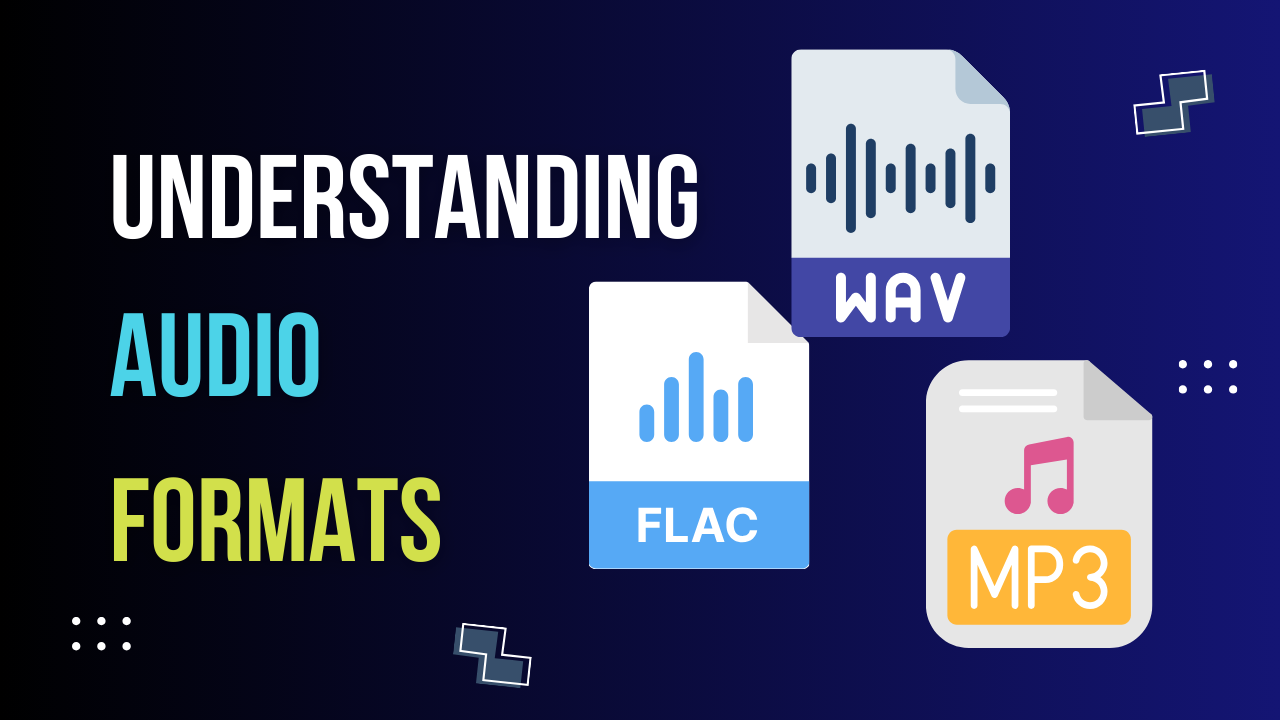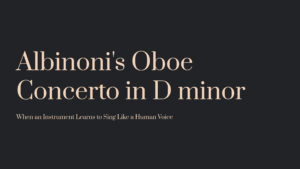
Table of Contents
When it comes to enjoying music, the format in which your audio files come can significantly impact your listening experience. For beginners, the world of audio formats might seem confusing with terms like MP3, FLAC, and WAV. Don’t worry! This article will break down these popular audio formats in an easy-to-understand way, helping you decide which is best for your listening needs.
MP3 (MPEG Audio Layer III)
What is MP3?
MP3 is the most common audio file format, known for its balance between sound quality and file size. It uses a method known as ‘lossy compression.’
Understanding Lossy Compression:
Imagine having a large, detailed painting. To make it easier to carry, you remove some details that seem less important. Lossy compression does something similar with audio files. It reduces file size by removing parts of the sound that are less noticeable to the human ear. However, this also means some loss of audio quality.
File Size and Quality:
MP3 files are relatively small, making them perfect for storing a large music library on your device or streaming online. The sound quality is generally good enough for most listeners, especially in casual settings like listening on a smartphone or in a car.
Compatibility:
MP3 works on virtually all devices and media players, making it the most versatile choice for everyday use.
Best for:
- Everyday listening
- Online streaming
- Saving space on your devices
FLAC (Free Lossless Audio Codec)
What is FLAC?
FLAC stands for Free Lossless Audio Codec. Unlike MP3, it compresses audio files without any loss in quality – hence ‘lossless.’
Understanding Lossless Compression:
Using our painting analogy, lossless compression is like folding the painting carefully without removing any details. You get a smaller package without losing any quality. FLAC files maintain the original sound quality of recordings, making them ideal for audiophiles and music enthusiasts.
File Size vs. Quality:
FLAC files are larger than MP3s but offer superior sound quality. They are significantly smaller than WAV files, making them a good middle ground.
Compatibility:
FLAC is supported by many modern devices and high-quality audio systems but is not as universal as MP3.
Best for:
- High-quality audio experiences
- Audiophiles
- Preserving CD-quality sound without the large file size of WAV
WAV (Waveform Audio File Format)
What is WAV?
WAV, or Waveform Audio File Format, is a high-quality, uncompressed audio format. It offers the best sound quality by preserving all the details of the original recording.
Understanding Uncompressed Audio:
If lossy compression is removing details and lossless compression is folding the painting, then uncompressed audio is like carrying the entire, unaltered painting. It means larger file sizes but no loss of detail.
File Size and Quality:
WAV files are very large, which can make them impractical for everyday use, especially on devices with limited storage. However, the audio quality is unparalleled.
Compatibility:
WAV files are broadly compatible with many devices and are a standard in professional audio work, but their large size can be a limiting factor.
Best for:
- Professional audio recording and editing
- Archiving in high quality
- Situations where the best audio quality is paramount
Choosing the Right Format for You
When selecting an audio format, consider your needs:
- Storage Space & Portability: If you’re limited on storage or need to move files frequently, MP3 is the most practical.
- Audio Quality: If you’re an audiophile or want the best listening experience, consider FLAC for a balance of quality and file size, or WAV for the highest quality.
- Device Compatibility: MP3 offers the broadest compatibility, making it a safe choice for varied devices and situations.
- Usage Scenario: Think about where and how you’ll be listening to your music. For casual listening, like in a car or on a phone, high fidelity may not be as crucial.
In conclusion, your choice of audio format depends on balancing your needs for audio quality, storage space, and compatibility with your devices. Whether you’re a casual listener or an audio enthusiast, understanding these formats helps you make the best choice for your audio experience.
Discover More
As we wrap up our journey through the hidden layers of the internet, it’s clear that the digital world is vast and full of mysteries. But the exploration doesn’t have to stop here! If you’re intrigued by the complexities of the internet, you might also enjoy delving into these related topics
10 Differences between MS OFFICE and GOOGLE OFFICE – ReViewMaster DEN (rvmden.com)
5 Important differences between .doc and .docx – ReViewMaster DEN (rvmden.com)



